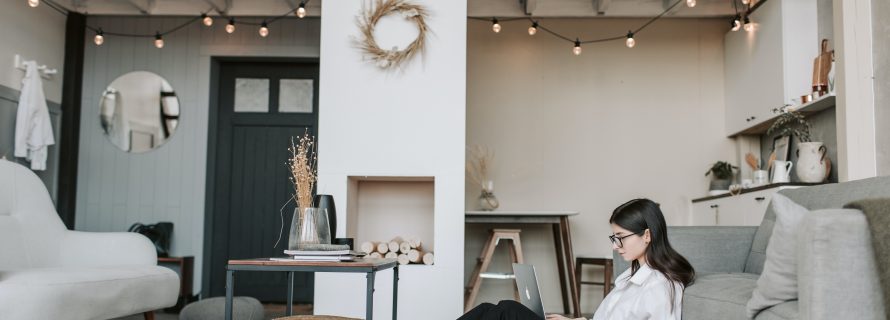4 Design Tips to Make Your Home More Relaxing

Due to the safety and security our homes provide, especially amid a pandemic, we are spending more of our time indoors than ever before. It’s then only right that we begin to put more thought into making our living space work to our benefit. Research shows that our home environment dictates a great deal about our mental and physical health. It influences our mood, impacts our decisions to act, and determines our stress levels. So if you’re interested in improving your well-being through a better environment, here are four helpful design tips to make your humble abode more relaxing for a clearer headspace.
- DIY fix and declutter
The small things you deem insignificant — like the clutter in your kitchen or the broken light in your bedroom — can easily compound and eventually affect your daily mood. Begin by making a list of issues that unsettle you, then tick them off one by one. You can try DIY fixes for small issues, like a leaking faucet or a hole in the dry wall, while other tasks may need professional intervention, like a leak on the roof. Once your place is completely functional, you can now focus on decluttering your home. Simple design tweaks involve putting away items you rarely use in hidden storage spaces under your bed or sink, and even something as simple as detangling cords and placing cables in neat organizers. After crossing out a few to-do’s yourself, you’ll have saved a few bucks while improving your overall mood at home.
- Plan your space
When moving into a home for the first time, things often sort of fall into place without much thought. After all, your mind is busy with hundreds of other things when you’re just trying to settle down. But to build a truly relaxing home, each space must be planned with purpose. Will your room be for entertainment, work, or storage? You can then design the layout of each room to best suit its purpose. For example, now that a lot of people are working remotely, creating a good home office layout with layered lighting, built-in tech storage, and a properly placed table can increase your efficiency and save you a great amount of energy throughout the work-from-home daily hustle and bustle.
- Get decorating
Decorating is one route to a more stress-relieving home. You can start by choosing a good color palette for your space. Some colors are known for having calming effects to humans, such as Skylight Blue and Wickham Gray, so it might be good to incorporate those in paint colors as well as your furniture and accents. Plants are another good addition for a more relaxing space. Not only are they pleasing to the eyes, but their positive effects are also backed by science. The NASA Clean Air Study has found that some common indoor plants can even alleviate harmful chemicals found in indoor air within a few hours. This just goes to show that furnishing and decorating can go a long way, not just in improving your mood, but in taking care of your physical health, too.
- Seek creative advice
Sometimes, you need fresh eyes to evaluate your space: loved ones who have an eye for design and, of course, trained professionals. In recent years, more and more people have started careers in interior design and decorating, with the industry worth an estimated $14.6 billion this year. There’s a good reason behind this number, though: more people are seeing the value of design in elevating quality of life. Professionals in home design are trained to provide the best solutions for spaces depending on customers’ needs and preferences. So if you’re looking to renovate your space into a more relaxing residence, we offer professional tools and services to optimize and beautify your home inside and out.
A major part of clearing our headspace lies in the details of our homes. If you’re feeling a noticeable level of stress and anxiety, apart from expert help, making changes in your immediate environment can be beneficial. The good news is, improving your standard of living doesn’t have to involve grand changes like buying a new house or moving. In fact, the seemingly small steps — eliminating stressors at home, optimizing your space’s functionality, and decorating your surroundings — can already make a positive impact on your mental health and overall quality of life.
About The Author: Article by Jennifer Venice. Jennifer is a New York-based freelance writer with a background in art and design. In her free time, she enjoys crafts and film photography.
Photo by Vlada Karpovich from Pexels
- Additions and New Construction
- All Exteriors
- Alterations
- Basements
- Bathrooms
- Customer Service
- Customer Stories
- Decks
- Design & Planning Show
- DIY
- Doors
- Educational Resources
- Extreme Makeover Home Edition
- Fashion Show
- General Remodeling
- Green Living
- Handyman Home Services
- Home Decor
- Home Entertainment
- Home Improvement
- Home Improvements
- How to Tips
- In The Community
- Kitchens
- Off-the-Wall Remodeling Stories
- Remodeling
- Resources
- Roofing
- Siding
- Social Media
- Sunrooms
- Tips & Tricks
- Trends
- Windows

